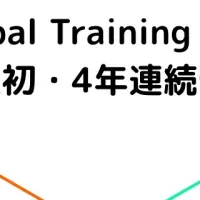
Power Electronics Market Set for Significant Growth of USD 10.67 Billion Amid AI Innovations - Technavio Insight
The Future of Power Electronics: A USD 10.67 Billion Surge
The power electronics market is poised for remarkable growth, with estimates predicting an increase of USD 10.67 billion from 2023 to 2028, according to recent findings by Technavio. This growth trajectory underscores the pivotal role of artificial intelligence (AI) in reshaping the landscape of power electronics.
Market Overview
Technavio’s report highlights that the market is anticipated to grow at a compound annual growth rate (CAGR) of 5.92% during the forecast period. This expansion is driven by the integration of advanced technologies, including AI, which are transforming various sectors reliant on power electronics.
Key Segments Driving Growth
The report categorizes the power electronics market into various segments, including:
- - Product Types: Discrete components and modules.
- - Materials Used: Silicon, silicon carbide, and gallium nitride.
- - Geographical Areas: Asia Pacific, Europe, North America, South America, and the Middle East & Africa.
Among these segments, the demand for advanced power systems integrated with AI technologies is expected to see the most rapid growth, further enhancing the efficiency of power conversion processes.
Applications Across Industries
Power electronics play an essential role in a wide array of applications, from consumer electronics and industrial systems to aerospace and healthcare technologies. The industry supports the efficiency of devices from electric vehicles (EVs) to solar power generation systems, enabling seamless energy management.
Key Technologies
Power semiconductors, including diodes, thyristors, and advanced materials, are crucial to various sectors:
- - Consumer Electronics: Enable portable device efficiency.
- - Renewable Energy: Enhance power generation efficiency from sources like wind and solar.
- - Telecommunications: Optimize performance in communication systems.
The integration of AI is further revolutionizing these applications by enhancing their adaptability and efficiency, ultimately reducing energy waste and increasing performance across sectors.
Industry Challenges and Trends
Despite the promising growth, the power electronics industry faces challenges such as evolving regulatory standards and the need for continuous innovation. However, ongoing research and development within the realms of AI and advanced materials, such as silicon carbide (SiC) and gallium nitride (GaN), are overcoming these barriers.
Conclusion
The future of power electronics looks promising, driven by AI innovations that not only enhance efficiency but also pave the way for sustainable energy solutions. With Technavio's insights, companies in this market are better equipped to identify opportunities and adapt strategies conducive to growth in the coming years. As demand for energy-efficient power systems rises, key players in this space must continue to innovate and leverage advancing AI technologies to maintain a competitive edge.
For those interested in a more detailed analysis, Technavio offers a free sample report revealing in-depth insights into market trends and dynamics, enabling stakeholders to strategize effectively for future advancements in power electronics.
Topics Consumer Technology)










【About Using Articles】
You can freely use the title and article content by linking to the page where the article is posted.
※ Images cannot be used.
【About Links】
Links are free to use.